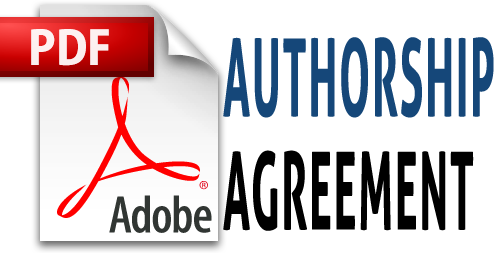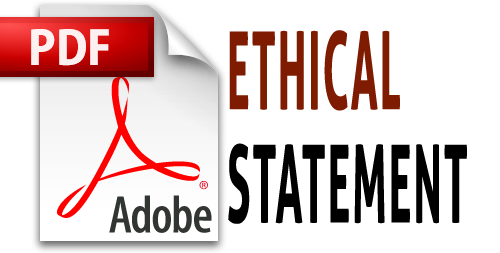RUANG BELAJAR BARU DAN IMPLIKASI TERHADAP PEMBELAJARAN DI ERA TATANAN BARU
 Uwes Anis Chaeruman(1*)
Uwes Anis Chaeruman(1*)
(1) Universitas Negeri Jakarta
(*) Corresponding Author
 Abstract viewed : 5048
|
Abstract viewed : 5048
|  PDF downloaded : 1036
PDF downloaded : 1036
Abstract
The Pandemic Coronavirus Disease (Covid-19) has taken place all over the world. This situation has affected all sectors of human life, likewise in the education sector. Physical distancing policy has forced all countries to close the school. Distance and online learning have become the only option to solve it. This article tried to answer two questions. First, what are the essences of learning spaces in the context of e-learning viewed from the perspective of time and space synchronicity? Second, what are the implications of it to the implementation of teaching and learning in the era Covid-19 and new normal? The researcher applied literature review to answer those questions. Literatures review result showed that learning space can be divided into four categories. This classification provides some implications toward the implementation of teaching and learning in the era of Covid-19 and new normal.
Abstrak
Pandemi virus corona (Covid-19) telah melanda seluruh dunia. Bencana kejadian luar biasa ini telah berpengaruh terhadap semua sektor kehidupan manusia, termasuk sektor pendidikan. Kebijakan jarak sosial dan fisik telah memaksa proses pembelajaran di sekolah terhenti. Belajar di rumah dengan moda pembelajaran jarak jauh dan daring menjadi satu-satunya pilihan untuk memecahkan masalah tersebut. Artikel ini berupaya menjawab dua hal. Pertama, apa esensi ruang belajar dalam konteks e-learning ditinjau dari sudut pandang ruang dan waktu? Kedua, apa implikasinya dalam pembelajaran di era Covid-19 dan tatanan baru? Peneliti menggunakan metode kajian pustaka untuk menjawab pertanyaan tersebut. Berdasarkan hasil kajian pustaka, diperoleh empat klasifikasi ruang belajar baru dan implikasi terhadap pembelajaran di era Covid-19 dan tatanan baru.
Keywords
References
Afify, M. K. (2018). The Impact of Interaction between Timing of Feedback Provision in Distance E-Learning and Learning Styles on achieving Learning Outcomes among Arab Open University Students. EURASIA Journal of Mathematics, Science and Technology Education, 14(7). https://doi.org/10.29333/ejmste/91619
Bergmann, J., & Sams, A. (2012). Flip your classroom: Reach every student in every class every day. International Society for Technology in Education.
Bersin, J. (2004). The blended learning book: Best practices, proven methodologies, and lessons learned. Pfeiffer.
Bonnel, W. (2008). Improving Feedback to Students in Online Courses. September - October 2008, 29(5), 5.
Caladine, R. (2008). Enhancing e-learning with media-rich content and interactions. Information Science Pub.
Chaeruman, U. A. (2019, December 21). Memaknai Kemerdekaan Belajar Mas Mendikbud Nadiem Makarim. Kompasiana. https://www.kompasiana.com/uweschaeruman7904/5dfe2221097f3645ad15f433/memaknai-kemerdekaan-belajar-mas-mendikbud-nadiem-makarim?page=all
Chaeruman, U. A., Wibawa, B., & Syahrial, Z. (2018). Determining the Appropriate Blend of Blended Learning: A Formative Research in the Context of Spada-Indonesia. American Journal of Educational Research, 6(3), 188–195. https://doi.org/10.12691/education-6-3-5
Dabbagh, N. (2002). The Evolution of Authoring Tools and Hypermedia Learning Systems: Current and Future Implications. Educational Technology, 42(4), 9.
Dettori, G. (2008). Meaningful learning using technology—By Elizabeth A Ashburn & Robert E Floden. British Journal of Educational Technology, 39(5), 950–951. https://doi.org/10.1111/j.1467-8535.2008.00890_2.x
Driscoll, M. P. (2005). Psychology of learning for instruction (3. ed). Pearson Allyn and Bacon.
Dryden, G., & Vos, J. (1999). The learning revolution: To change the way the world learns.
Fitzsimons, M. (2014). Engaging Students’ Learning Through Active Learning. https://doi.org/10.21427/D7842T
Garrison, D. R., Anderson, T., & Archer, W. (2010). The first decade of the community of inquiry framework: A retrospective. The Internet and Higher Education, 13(1–2), 5–9. https://doi.org/10.1016/j.iheduc.2009.10.003
Garrison, D. R., & Arbaugh, J. B. (2007). Researching the community of inquiry framework: Review, issues, and future directions. The Internet and Higher Education, 10(3), 157–172. https://doi.org/10.1016/j.iheduc.2007.04.001
Horn, M. B., & Staker, H. (2015). Blended: Using disruptive innovation to improve schools (First edition). Jossey-Bass.
Horton, W. K. (2006). E-learning by design. Pfeiffer.
Iswoyo, S. (2020, February 13). Merdeka Belajar Artinya Harus Memaksimalkan Personalized Learning. Millenia. https://millennia.co.id/2020/02/13/merdeka-belajar-artinya-harus-memaksimalkan-personalized-learning/
Jansson, J., & Hracs, B. J. (2018). Conceptualizing curation in the age of abundance: The case of recorded music. Environment and Planning A: Economy and Space, 50(8), 1602–1625. https://doi.org/10.1177/0308518X18777497
Kolb, L. (2017). Learning first, technology second: The educator’s guide to designing authentic lessons (First edition). International Society for Technology in Education.
Leibold, N., & Schwarz, L. M. (2015). The Art of Giving Online Feedback. 15, 13.
Martínez-Argüelles, M.-J., Plana, D., Hintzmann, C., Batalla-Busquets, J.-M., & Badia, M. (2015). Usefulness of feedback in e-learning from the students’ perspective. Intangible Capital, 11(4), 627–645. https://doi.org/10.3926/ic.622
Miller, M. D. (2014). Minds online: Teaching effectively with technology. Harvard University Press.
Muraina, I. O., Okedeyi, A. S., Adesanya, A. T., & Oginni, A. M. (2016). Authoring Tools: Its Awareness and Incorporation into Teaching of Sciences and otherSubjects in Lagos State Secondary Schools, Nigeria. International Journal of Learning and Teaching. https://doi.org/10.18178/ijlt.2.2.167-171
Murillo-Zamorano, L. R., López Sánchez, J. Á., & Godoy-Caballero, A. L. (2019). How the flipped classroom affects knowledge, skills, and engagement in higher education: Effects on students’ satisfaction. Computers & Education, 141, 103608. https://doi.org/10.1016/j.compedu.2019.103608
Norberg, A., Dziuban, C. D., & Moskal, P. D. (2011). A time‐based blended learning model. On the Horizon, 19(3), 207–216. https://doi.org/10.1108/10748121111163913
Osmangazi, E. (2017). The Effect of Active Learning Approach on Attitudes of 7th Grade Students. International Journal of Instruction, 10(4), 129–144. https://doi.org/10.12973/iji.2017.1048a
Partnership for 21 Century Skills. (2009, December 9). P21 Framework Defiition. https://files.eric.ed.gov/fulltext/ED519462.pdf
Piskurich, G. M. (2004). Getting the most from online learning. http://www.books24x7.com/marc.asp?bookid=12766
Piskurich, G. M., & Piskurich, J. F. (2006). Rapid instructional design: Learning ID fast and right (2nd ed). Pfeiffer.
Rasheed, R. A., Kamsin, A., & Abdullah, N. A. (2020). Challenges in the online component of blended learning: A systematic review. Computers & Education, 144, 103701. https://doi.org/10.1016/j.compedu.2019.103701
Schwab, K. (2018). Shaping the future of the fourth industrial revolution: A guide to building a better world. https://www.overdrive.com/search?q=6B516B26-17A0-41B7-B9FA-3EA05A8B9DCE
Setiawan, W. (n.d.). Merdeka Belajar: Konsepsi dan Implementasi pada Pengelolaan Sekolah di Era Digital. UPI. Retrieved June 20, 2020, from http://file.upi.edu/Direktori/FPMIPA/PRODI._ILMU_KOMPUTER/196601011991031-WAWAN_SETIAWAN/Merdeka%20Belajar%20di%20Era%20Digital.pdf
Smaldino, S. E., Lowther, D. L., Mims, C., & Russell, J. D. (2019). Instructional technology and media for learning (12th Edition). Pearson Education, Inc.
Syah, R. H. (2020). Dampak Covid-19 pada Pendidikan di Indonesia: Sekolah, Keterampilan, dan Proses Pembelajaran. SALAM: Jurnal Sosial dan Budaya Syar-i, 7(5). https://doi.org/10.15408/sjsbs.v7i5.15314
Ungerer, L. M. (2016). Digital Curation as a Core Competency in Current Learning and Literacy: A Higher Education Perspective. The International Review of Research in Open and Distributed Learning, 17(5). https://doi.org/10.19173/irrodl.v17i5.2566
Yu, Z. (2019). Mobile Device- and Video-Aided Flipped English Classrooms: International Journal of Mobile and Blended Learning, 11(2), 19–32. https://doi.org/10.4018/IJMBL.2019040102
Zhang, D., Zhao, J. L., Zhou, L., & Nunamaker, J. F. (2004). Can e-learning replace classroom learning? Communications of the ACM, 47(5), 75–79. https://doi.org/10.1145/986213.986216
Zhang, W., Wang, Y., Yang, L., & Wang, C. (2020). Suspending Classes Without Stopping Learning: China’s Education Emergency Management Policy in the COVID-19
Outbreak. Journal of Risk and Financial Management, 13(3), 55. https://doi.org/10.3390/jrfm13030055
Zydney, J. M., Warner, Z., & Angelone, L. (2020). Learning through experience: Using design based research to redesign protocols for blended synchronous learning environments. Computers & Education, 143, 103678. https://doi.org/10.1016/j.compedu.2019.103678
Refbacks
- There are currently no refbacks.
Copyright (c) 2020 Uwes Anis Chaeruman

This work is licensed under a Creative Commons Attribution-NonCommercial 4.0 International License.
Kwangsan Indexed By
Kwangsan: Jurnal Teknologi Pendidikan diterbitkan oleh Balai Besar Guru Penggerak (BBGP) Prov. Jawa Timur.
Kementerian Pendidikan dan Kebudayaan
Alamat Redaksi:
Jl. Mangkurejo, Ds. Kwangsan, Sedati - Sidoarjo.
Telp 0318911373 Fax. 0318911392
Email: jurnal.kwangsan@kemdikbud.go.id & jurnalkwangsan@dikbud.belajar.id






























